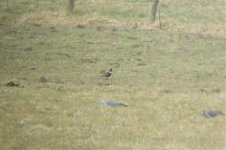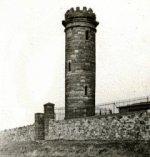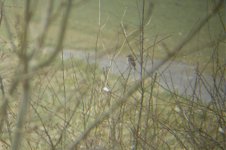midlands birder
Well-known member
A great little site, and as one of the highest points in the midlands, and certainly for a fair few miles around, this place has to do the business sometimes!
Have been visiting a few times over the winter scouting the site out to little reward, but was looking forward to migration times, and was happy this morning when as I walked on site I met a fellow birder who had told me he had been watching a female RING OUZEL on the NW side of the hill. I quickly located a 2nd bird (with an obvious white speckled head), and eventually we located the birds down in a field. However, from my views i'm not entirely convinced either was a female bird. The closer 'speckled' bird was an obvious male, however the more distant bird on the other side of the field also seemed to have a bright white chest patch and little hint of any greyness.
So there was 100% 2 birds up there, but both (in my view) seemed to be males, so does that mean there could be a possible 3rd bird up there?
A photo of the more distant bird (Male or female?)

MB
Have been visiting a few times over the winter scouting the site out to little reward, but was looking forward to migration times, and was happy this morning when as I walked on site I met a fellow birder who had told me he had been watching a female RING OUZEL on the NW side of the hill. I quickly located a 2nd bird (with an obvious white speckled head), and eventually we located the birds down in a field. However, from my views i'm not entirely convinced either was a female bird. The closer 'speckled' bird was an obvious male, however the more distant bird on the other side of the field also seemed to have a bright white chest patch and little hint of any greyness.
So there was 100% 2 birds up there, but both (in my view) seemed to be males, so does that mean there could be a possible 3rd bird up there?
A photo of the more distant bird (Male or female?)

MB








